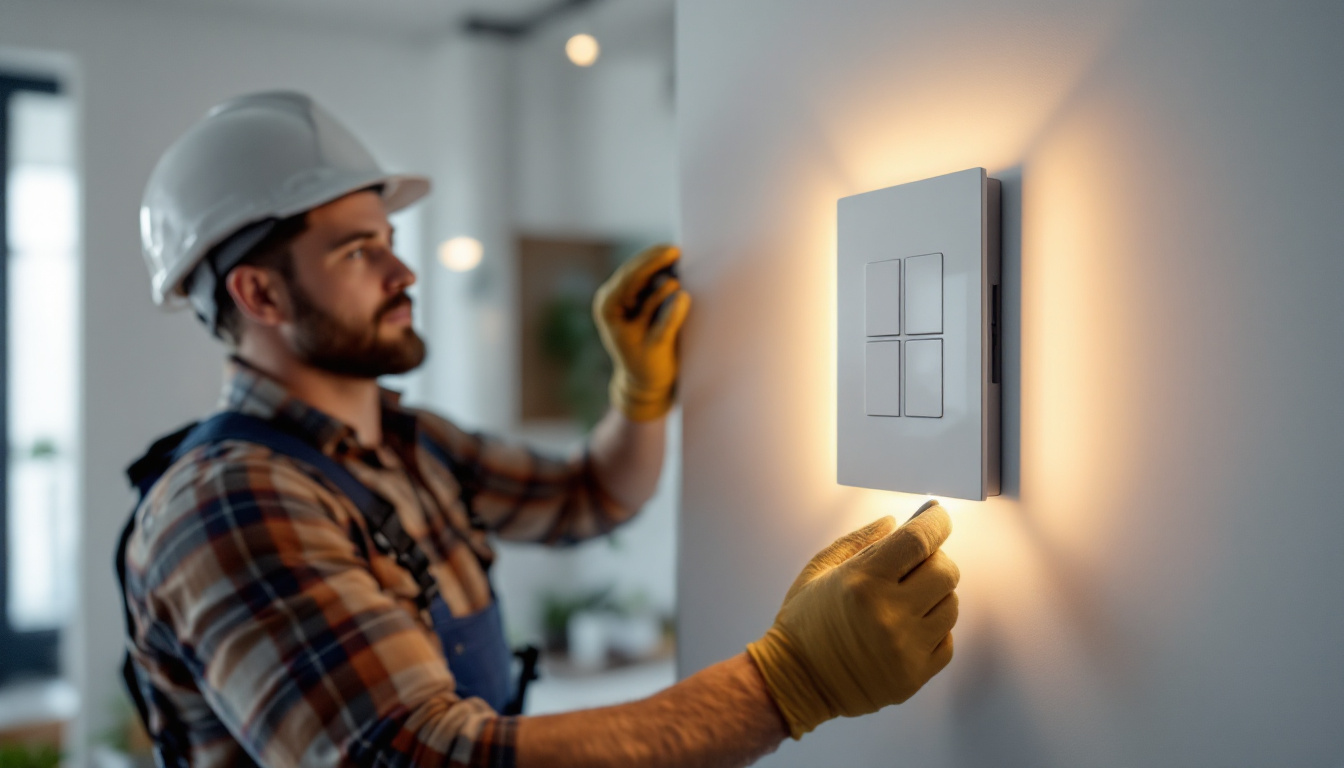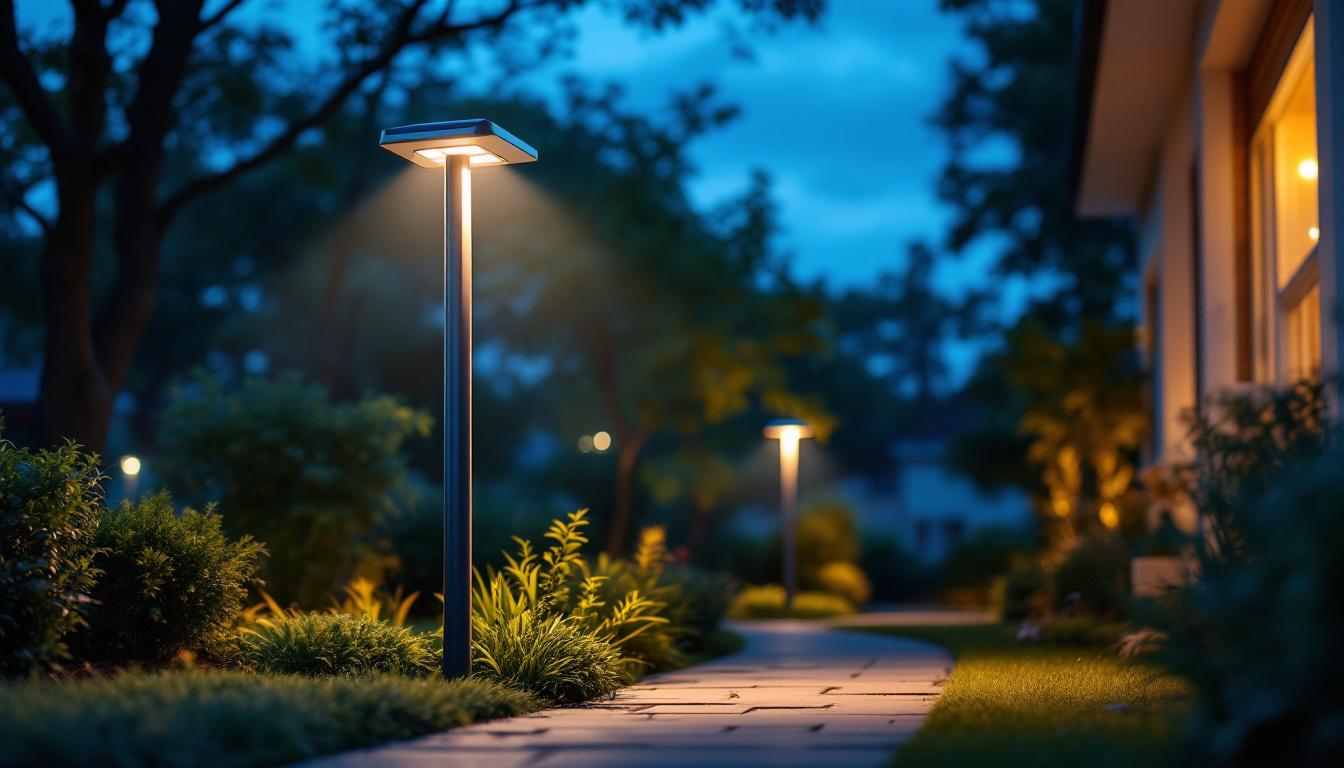
The lighting industry is continuously evolving, with new technologies and design philosophies emerging regularly. One of the most practical innovations in this field is the lighted light switch. This feature not only enhances functionality but also adds a touch of sophistication to any space. For lighting contractors, understanding the benefits, installation techniques, and design considerations of lighted light switches can significantly improve client satisfaction and project outcomes.
Lighted light switches are designed to illuminate the switch itself, making it easier to find in the dark. This simple yet effective feature can be particularly beneficial in areas such as hallways, bedrooms, and bathrooms. By providing a visual cue, these switches enhance safety and convenience, especially for children and the elderly. In addition to their practical applications, lighted switches can also serve as a stylish element in home decor, blending functionality with design.
There are several types of lighted light switches available on the market, each with unique features and applications. The most common types include:
Incorporating lighted light switches into lighting designs offers numerous advantages:
Moreover, lighted light switches can be particularly advantageous in multi-story homes or large spaces where navigating in dim lighting can be challenging. By strategically placing these switches, homeowners can create a safer environment, reducing the risk of trips and falls. Additionally, the soft glow emitted by these switches can serve as a nightlight, providing just enough illumination for nighttime navigation without being overly bright or disruptive to sleep.
Finally, the installation of lighted light switches can also increase the overall value of a home. Potential buyers often appreciate modern conveniences and safety features, making these switches an attractive selling point. As smart home technology continues to evolve, integrating lighted switches with other smart devices can further enhance the appeal, offering prospective homeowners a glimpse into a more connected and efficient living space.
Proper installation of lighted light switches is crucial for their functionality and longevity. Contractors must consider several factors to ensure a successful installation.
Lighted light switches typically require a neutral wire for the illumination feature to function correctly. It is essential to check the existing wiring in the installation area. If a neutral wire is not available, alternative solutions, such as using a switch with a built-in power supply, may be necessary. Additionally, it’s important to adhere to local electrical codes and regulations during installation to ensure safety and compliance. This may involve consulting with a licensed electrician, especially in older homes where wiring may not meet current standards. Understanding the specific electrical load requirements for the lighted switch can also prevent potential overloads, which could lead to circuit failures or fire hazards.
When installing lighted light switches, placement is key. They should be positioned at a height that is easily accessible for all users, including children and individuals with disabilities. Additionally, consider the surrounding environment; switches in high-traffic areas should be placed where they are least likely to be obstructed. It’s also beneficial to consider the orientation of the switch; placing it in a way that aligns with the natural flow of movement can enhance usability. For instance, switches near doorways should be easily reachable from both inside and outside the room. Furthermore, in spaces like hallways or staircases, strategically placing lighted switches can provide added safety by ensuring visibility during low-light conditions, helping to prevent accidents.
After installation, thorough testing is essential to ensure that the lighted switch functions correctly. Check the illumination feature in various lighting conditions to confirm its effectiveness. If issues arise, troubleshooting may involve inspecting the wiring connections or replacing the switch if it is faulty. Additionally, it can be helpful to document the installation process, including any modifications made to the wiring, as this information can be invaluable for future maintenance or upgrades. Regularly testing the switch after installation can also help identify any potential issues early on, ensuring that the lighted feature remains functional and that users can rely on it for visibility in the dark. Keeping an eye on the switch’s performance over time can also inform whether it may need to be replaced or serviced, thus prolonging its lifespan and maintaining safety in the home.
The design of lighted light switches can significantly impact the overall aesthetic of a space. Lighting contractors should consider various design elements when selecting and installing these switches.
Lighted light switches come in various colors and finishes, allowing contractors to match them with the surrounding decor. Options range from classic white and black to more contemporary metallic finishes. Selecting the right color can enhance the switch’s visibility while complementing the overall design scheme.
There are numerous styles of lighted switches available, including toggle, rocker, and dimmer switches. Each style offers a different user experience and aesthetic appeal. Contractors should consider the preferences of their clients when recommending switch styles, as well as the specific functionality required for the space.
As smart home technology becomes increasingly popular, integrating lighted light switches with these systems can provide added convenience and control. Many modern lighted switches are compatible with smart home platforms, allowing users to control lighting remotely or through voice commands. This integration can enhance the overall user experience and add value to the installation.
Regular maintenance of lighted light switches is essential to ensure their longevity and functionality. Educating clients on proper care can lead to increased satisfaction and fewer service calls.
Lighted switches should be cleaned regularly to maintain their appearance and functionality. Use a soft, damp cloth to wipe down the switch, avoiding harsh chemicals that could damage the finish. Regular cleaning can prevent dust buildup, which may affect the illumination feature.
For lighted switches that use replaceable bulbs, it is important to inform clients about the type of bulb used and when it should be replaced. LED bulbs typically have a long lifespan, but educating clients on signs of bulb failure can help ensure the switch remains functional.
If a lighted switch fails to illuminate or operates inconsistently, it may indicate an underlying electrical issue. Encourage clients to contact a qualified electrician if they experience problems beyond simple bulb replacement. This proactive approach can prevent further complications and ensure safety.
When discussing lighted light switches with clients, take the time to explain the various features and benefits. Highlight the safety aspects, energy efficiency, and aesthetic appeal. Providing real-life examples of how these switches can enhance their space can help clients appreciate their value.
Educate clients on the importance of maintaining their lighted light switches. Providing them with simple maintenance tips can empower them to take care of their installations, leading to longer-lasting products and increased satisfaction.
Encouraging clients to provide feedback on their experience with lighted light switches can help contractors improve their services. Understanding client preferences and concerns can lead to better recommendations and installations in the future.
Lighted light switches represent a practical and stylish solution for enhancing lighting functionality in various spaces. For lighting contractors, understanding the benefits, installation techniques, and design considerations associated with these switches is essential for delivering high-quality service. By staying informed and communicating effectively with clients, contractors can ensure successful installations that meet the needs and preferences of their customers.
As the lighting industry continues to evolve, embracing innovations like lighted light switches will not only enhance project outcomes but also contribute to a safer and more aesthetically pleasing environment for clients. By prioritizing education, maintenance, and client communication, lighting contractors can position themselves as experts in the field, ultimately leading to greater success and satisfaction in their projects.
Ready to elevate your lighting installations with the practical elegance of lighted light switches? At LumenWholesale, we provide lighting contractors like you with the highest quality, spec-grade lighting products at prices that can’t be beaten. Say goodbye to local distributor markups and hello to our extensive selection that meets rigorous industry standards. With free shipping on bulk orders, LumenWholesale is your go-to source for premium lighting solutions that combine quality, affordability, and convenience. Don’t compromise on your lighting projects—visit LumenWholesale today for Wholesale Lighting at the Best Value and light up your client’s world with confidence.

Discover how light ceilings are revolutionizing the lighting industry, offering contractors innovative solutions for enhanced aesthetics and energy efficiency.

Discover the transformative benefits of solar LED lamp post lights and why they’re a must-have for every lighting contractor.

Discover innovative cost-saving strategies for lighting contractors with LED lights for can lights.

Discover why high bay lighting is essential for successful projects in large spaces.